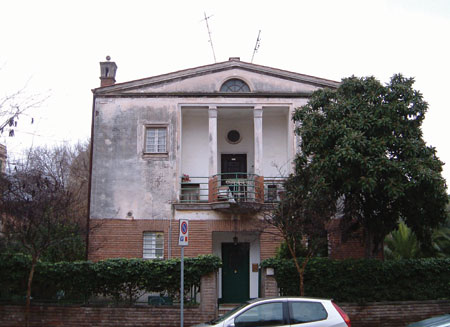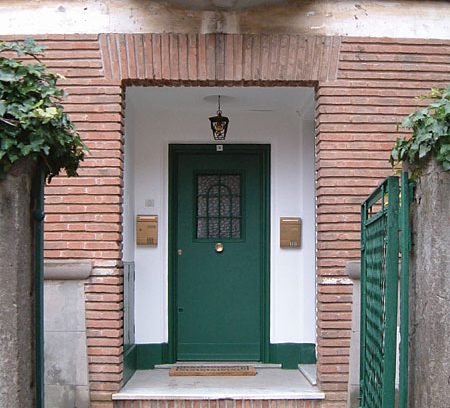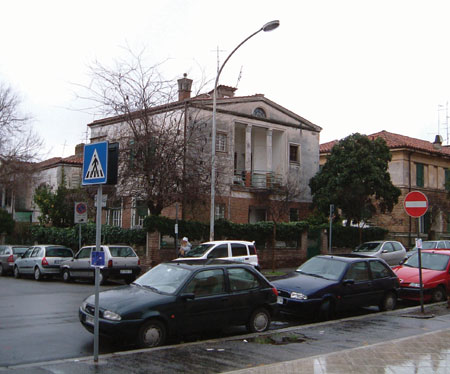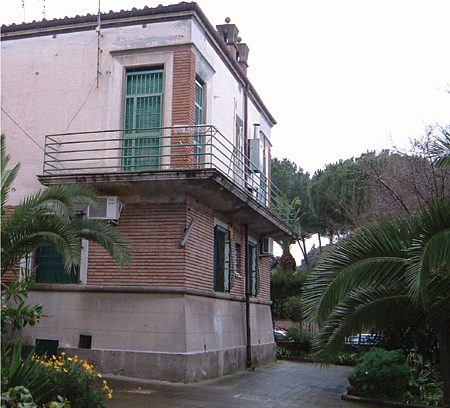This website uses cookies
This website uses cookies to enable it to function properly and to analyse how the website is used. Please click 'Close' to accept and continue using the website.






May 2006 - Casetta Modello
Text and pictures by Gian Luca Amadei
Designed by Mario de Renzi in 1929, Casetta Modello (prototype house) was part of a new suburb southwest of Rome called Garbatella. This area was specifically designed to accommodate dwellings for the factory workers employed in the nearby industrial Ostiense area, by the River Tiber.
The master plan for Garbatella started in 1904, but the first group of buildings was only completed in 1920. It was inspired by the utopian garden city projects developed at the time in France and Germany and, in particular, by the Hampstead Garden Suburb in London by Raymond Unwin.
Despite the idealistic intentions of Garbatella’s planners, the scheme failed overall to deliver housing at adequate prices to the local working class, putting pressure on the planners to search for new, affordable solutions. By the time the suburb was completed in the mid-1950s, the aims of its original planners had almost completely been forgotten. But they left behind a string of interesting architectural experiments such as Casetta Modello by De Renzi, which from an historical point of view, narrate the architectural evolution of public housing in Rome for the first half of the twentieth century.
With this prototype house, De Renzi was looking to create a new architectural language, a synthesis between the spontaneous vernacular architecture in the nearby roman countryside – still rich with medieval references – and the neoclassical balanced beauty of the Palladian aristocratic residences in Veneto (a region in the north-east of Italy). The Palladian influence is recognisable to some extent in the proportions of the building itself and the symmetrical arrangement of the façade with its columns and loggia projecting out in the middle (see overall view of the front façade). The windows, very small on the front façade, become more generous at the back of the building where a balcony runs across the length of the building at first floor level, and full-length windows emphasise the corners of the building.
Casetta Modello was designed to accommodate two families, one on each floor. To keep in line with the low budget, the construction timetable and available materials, De Renzi resolved the first floor access by concealing the staircase within the wall of the front façade. The access to it is on the right hand side of the ground floor entrance (see picture of main entrance).
For the exterior, De Renzi established a hierarchy of materials in relation to their weight: the stone effect to give an appearance of solidity to the foot of the house, plaster to give lightness toward the top part of the building and traditional roman red brick in the transition between the two.
Although the absence of appropriate maintenance throughout the years has left the building in a state of disrepair, this example of housing architecture encapsulates the spirit of an era. Also, for me, Casetta Modello holds memories of my childhood when I used to pass it with my mum and my brother while strolling around Garbatella for an after school ‘passeggiata’.
Gian Luca Amadei is a freelance journalist, currently completing his MSc in Architectural History at the Bartlett in London.
Look for past Buildings of the Month by entering the name of an individual building or architect or browsing the drop down list.

Become a C20 member today and help save our modern design heritage.